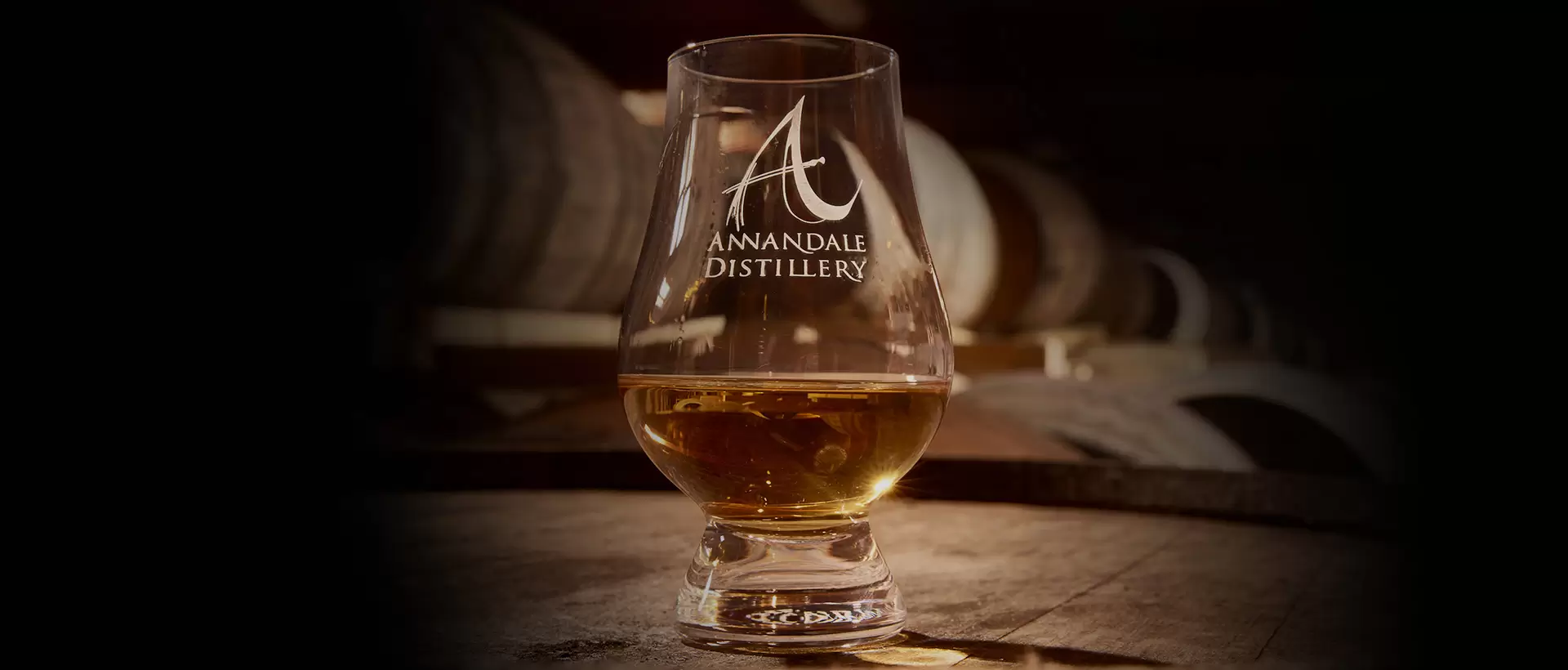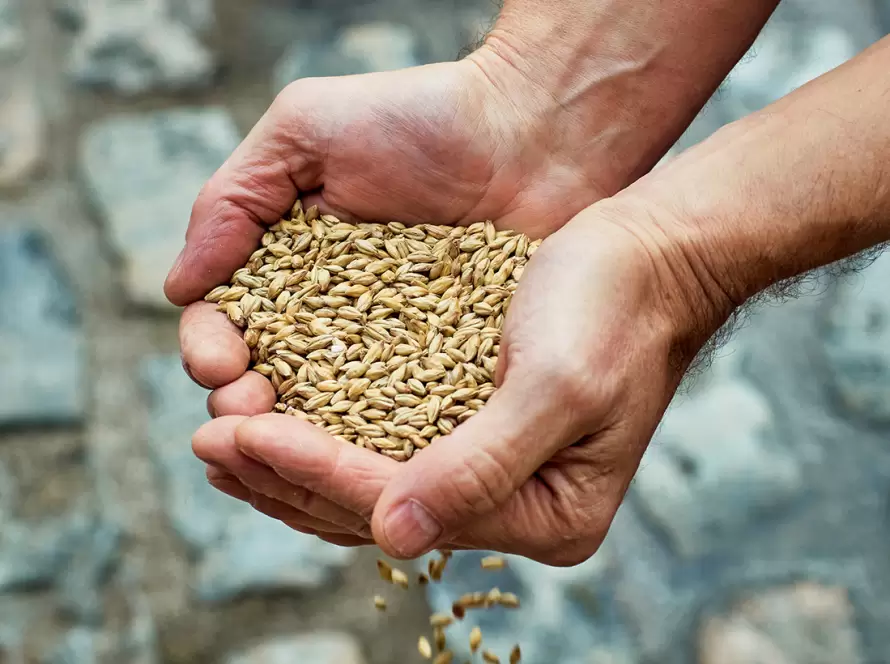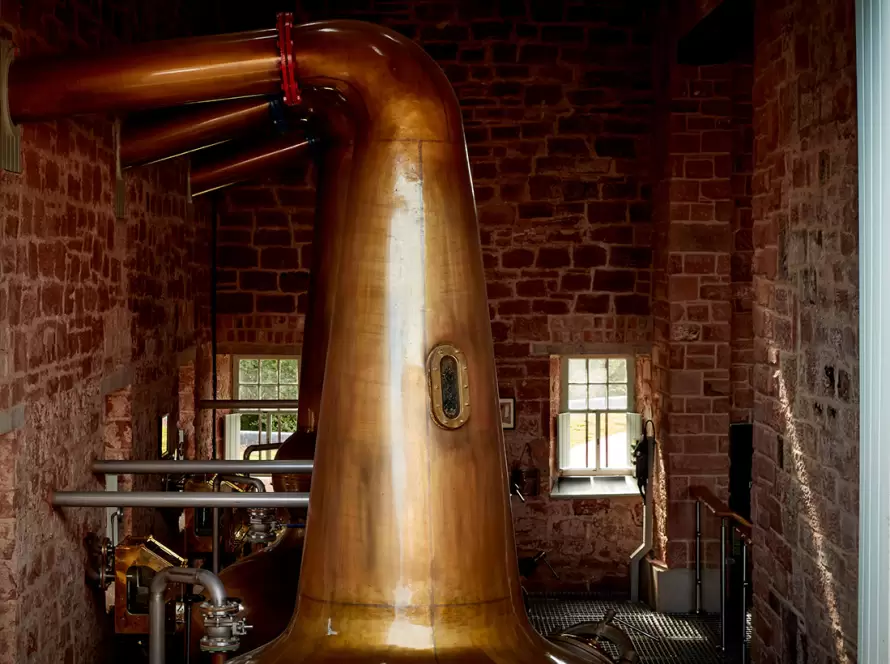When whisky is chilled, either through storage at low temperatures or the addition of ice in-glass, it may form a cloudy haze. This is considered undesirable by some whisky drinkers, although not all. Chill filtration removes the compounds responsible for haze, leaving the whisky crystal clear.
To understand how haze is formed, and subsequently removed, it’s necessary to know something about two types of chemical compound formed in whisky; fatty acids and esters.
Fatty acids
Yeast and lactic bacteria (to a lesser extent) produce fatty acids during the fermentation of wort (the sugary solution produced when starch is converted into sugar during the mashing of barley) into wash (alcoholic beer-like liquor). Fatty acids, along with another substance called glycerol are the principal constituents of fat. The ‘body’ of a fatty acid is formed from carbon atoms linked together in a chain. These chains of carbon atoms can be short, long or somewhere in between.
Esters
Esters are formed when a molecule of alcohol and a molecule of acid react together (known as esterification). Esters are fruity in character and make a significant contribution to the sensory characteristics of Scotch whisky.
Two basic types of ester occur in Scotch Whisky: Acetate esters formed by esterification of acetic acid and alcohol, and ethyl esters formed from ethanol and a fatty acid. As ethanol (ethyl alcohol) is the principal alcohol formed during brewing, ethyl acetate is the most commonly occurring acetate ester in whisky. This has a characteristic sweet, pear drops smell. As most of the alcohols formed during fermentation have short carbon chains, the corresponding acetate esters also have short carbon chains and therefore are not greatly implicated in the formation of haze. However, because ethyl esters are formed from long-chain fatty acids, they can be quite large molecules. As the chain length of a fatty acid or an ester increases, volatility decreases. Consequently, fewer of these larger fatty acids and esters will make their way into the distilled spirit. Nonetheless, some do, and this is how the problem of hazing arises.
Micelles
Molecules of long chain fatty acids and esters have polar (charged) and non-polar (non-charged) entities, due to the nature of the various different functional groups that form part of the molecule’s structure. Polarisation causes the molecules to clump together to form structures known as micelles, where the non-polar (neutral) parts of the molecules aggregate towards the centre of the micelle and the polar (charged) parts project out into the solution. As the proportion of water in whisky is increased (the critical point seems to be about 46% alcohol by volume), the micelles begin to come out of solution and are precipitated. It’s these precipitated micelles of long chain fatty acids and esters that form haze in whisky. Lowering the temperature of the whisky further reduces the solubility of the micelles which exacerbates the problem of haze. Consequently, adding a few chunks of ice to a non-chill filtered cask-strength whisky could reduce the ABV below 46% and chill the liquid sufficiently to cause the micelles to come out of solution and cause haze. The most important esters in haze formation are ethyl laurate, a C14 (14 carbon chain) molecule, and ethyl palmitate and ethyl-9-hexadeanoate, both of which are C18 molecules. Removing these could potentially diminish the flavour of the whisky, albeit to a very modest extent
Process
As the name suggests, chill filtering removes haze from whisky by first chilling it (between ambient and -10oC) and then filtering it through a plate and frame filter containing filter sheets made of low-calcium kieselguhr (a type of diatomaceous earth). Chill filtering is actually a very mild process that removes about 80% to 90% of the fatty acid/ester micelles from Scotch whisky without causing any collateral damage.
To chill filter or not to chill filter?
With distilleries such as Annandale, that produce Single Cask, Single Malt Scotch Whiskies at cask strength, chill filtering is utterly pointless and not something we are likely to entertain. People that buy Annandale’s whiskies generally prefer truly authentic whisky and they’re unlikely to be put-off by haze. Indeed, for many, it is a hallmark of authenticity.
However, chill filtering isn’t quite the ‘evil’ that some people make it out to be, especially when implemented properly. By virtue of its very purpose, chill filtering will inevitably remove some of the fruity esters and this could potentially impact on the fruity character of the whisky, but probably only to a very modest extent. It shouldn’t remove colour. Nonetheless, as haze is construed as a fault or an impurity by some whisky drinkers, chill filtering is probably justifiable for mass market blended Scotch whiskies and vatted Single Malts……but not for Single Cask, Single Malt Scotch whiskies such as Annandale’s Man O’Sword or Man O’Words.
Rule of thumb
When buying Single Malt Scotch whisky, check the alcohol by volume (ABV) on the label. If the ABV is 46% or above, it probably hasn’t been chill filtered. If it’s below 46% ABV it almost certainly has been chill filtered. Most Single Malts are sold at either 40% ABV or 43% ABV, the latter in the USA and duty free. These will have been chill filtered. Most Single Casks Single Malts are sold at cask strength (typically 55% – 61% ABV, depending on age) and will not have been chill filtered (as with Annandale).
The choice is yours!
I always buy non-chill filtered whisky and add a small amount of water and/or ice to reduce the ABV to approximately 35%. Watching the whisky form a haze is, for me, part of the sheer pleasure of drinking Single Malts.






